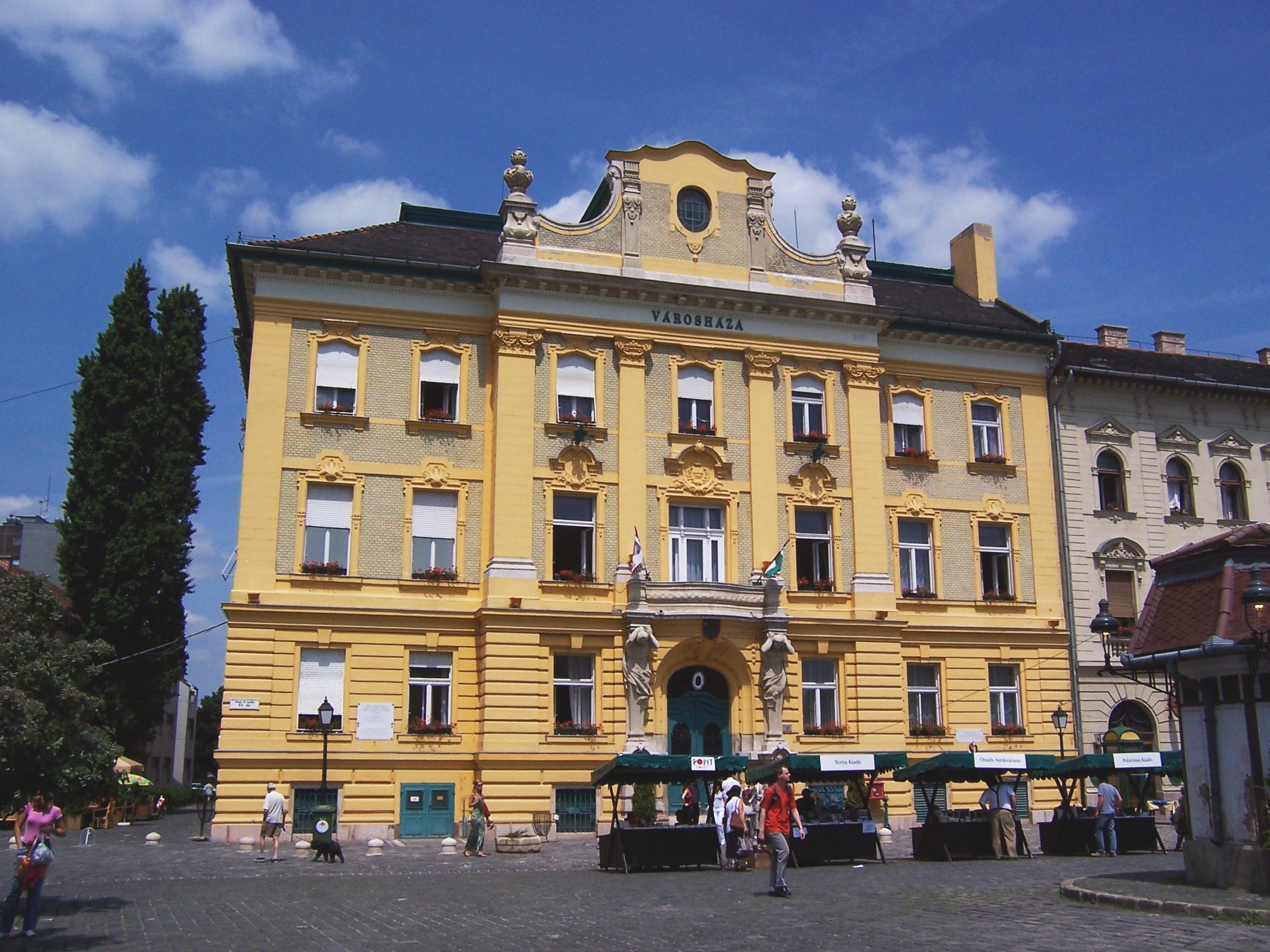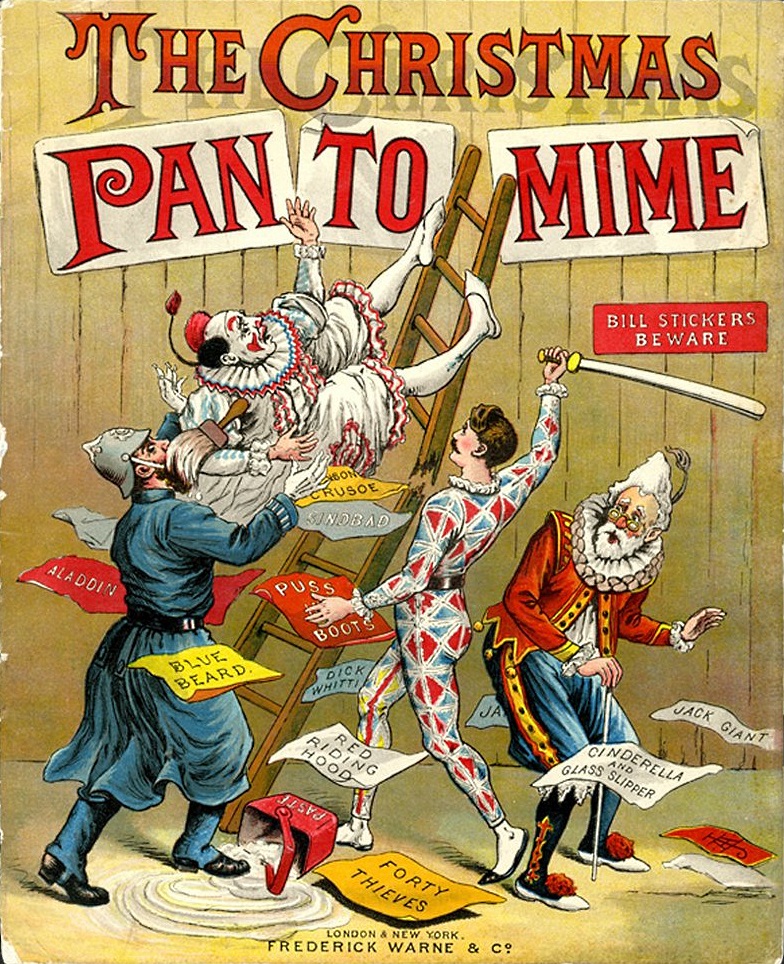|
Kiralfy Brothers
Imre Kiralfy and Bolossy Kiralfy were highly influential burlesque and spectacle producers in Europe and the United States toward the end of the 19th century. The brothers paved the way for many of our modern day spectacles. With backgrounds in music and dance, these performers turned producers dazzled New York City with theatrical wonders. The brothers had a long and successful partnership and even continued to have success in their individual careers. From folk dancing in Europe to directing and producing in the United States, the Kiralfys spent their lives astounding audiences with unseen visual phenomenon and were never afraid to push the boundaries earning them a special place in entertainment history. Family life The Kiralfy Brothers, Imre (1845-1919) and Bolossy (1848-1932), were the eldest of seven siblings born in the 1840s in Pest—(since 1873 incorporated with Buda and Óbuda into Budapest)—during the Hungarian Revolution, in which their father, Jacob Köni ... [...More Info...] [...Related Items...] OR: [Wikipedia] [Google] [Baidu] |
Pest, Hungary
Pest () is the eastern, mostly flat part of Budapest, Hungary, comprising about two-thirds of the city's territory. It is separated from Buda and Óbuda, the western parts of Budapest, by the Danube River. Among its most notable sights are the Inner City (Budapest), Inner City, the Hungarian Parliament Building, Heroes' Square (Budapest), Heroes' Square and Andrássy Avenue. In colloquial Hungarian language, Hungarian, "Pest" is often used for the whole Capital (political), capital of Budapest. The three parts of Budapest (Pest, Buda, Óbuda) united in 1873. Etymology According to Ptolemy the settlement was called ''Pession'' in ancient times (Contra-Aquincum). Alternatively, the name ''Pest'' may have come from a Slavic word meaning "furnace", "oven" (Bulgarian ; Serbian /''peć''; Croatian ''peć''), related to the word (meaning "cave"), probably with reference to a local cave where fire burned. The spelling ''Pesth'' was occasionally used in English, even as late as the e ... [...More Info...] [...Related Items...] OR: [Wikipedia] [Google] [Baidu] |
Óbuda
Óbuda was a town in Hungary that was merged with Buda and Pest on 17 November 1873; it now forms part of District III-Óbuda-Békásmegyer of Budapest. The name means ''Old Buda'' in Hungarian (in German, ''Alt-Ofen''). The name in Bosnian, Croatian and Serbian for this city is ''Stari Budim'', but the local Croat minority calls it ''Obuda'' (the name "Budim" is used for the fortress in Buda). In Czech it is called ''Starý Budín''. The island (Óbuda Island) next to this part of the city today hosts the Sziget Festival, a huge music and cultural festival. Óbuda's centre is ''Fő tér'' (Main Square), connected to a small square with a sculpture of people waiting for the rain to stop. It is accessible by HÉV (''Szentlélek tér'' station). History Settlements dating from the Stone Age have been found in Óbuda. The Romans built there Aquincum, the capital of Pannonia province. Hungarians arrived after 900 and it served as an important settlement of major tribal leader ... [...More Info...] [...Related Items...] OR: [Wikipedia] [Google] [Baidu] |
George Atkins (actor)
George Atkins is the name of: *George Atkins (American football) (1932–2015), American football player *George Atkins (broadcaster) (1917–2009), Canadian broadcaster *George Atkins (cyclist) George Richard Atkins (born 18 August 1991) is a British former track and road racing cyclist, who rode professionally between 2014 and 2016. He was a member of British Cycling's Olympic Development Programme. In 2009 he won the junior race at t ... (born 1991), British cyclist See also * George Atkinson (other) {{hndis, Atkins, George ... [...More Info...] [...Related Items...] OR: [Wikipedia] [Google] [Baidu] |
Humpty Dumpty
Humpty Dumpty is a character in an English nursery rhyme, probably originally a riddle and one of the best known in the English-speaking world. He is typically portrayed as an anthropomorphic egg, though he is not explicitly described as such. The first recorded versions of the rhyme date from late eighteenth-century England and the tune from 1870 in James William Elliott's ''National Nursery Rhymes and Nursery Songs''. Its origins are obscure, and several theories have been advanced to suggest original meanings. Humpty Dumpty was popularized in the United States on Broadway by actor George L. Fox in the pantomime musical ''Humpty Dumpty''. The show ran from 1868 to 1869, for a total of 483 performances, becoming the longest-running Broadway show until it was surpassed in 1881 by ''Hazel Kirke''. As a character and literary allusion, Humpty Dumpty has appeared or been referred to in many works of literature and popular culture, particularly English author Lewis Carroll's 1871 b ... [...More Info...] [...Related Items...] OR: [Wikipedia] [Google] [Baidu] |
Pantomime
Pantomime (; informally panto) is a type of musical comedy stage production designed for family entertainment. It was developed in England and is performed throughout the United Kingdom, Ireland and (to a lesser extent) in other English-speaking countries, especially during the Christmas and New Year season. Modern pantomime includes songs, gags, slapstick comedy and dancing. It employs gender-crossing actors and combines topical humour with a story more or less based on a well-known fairy tale, fable or folk tale.Reid-Walsh, Jacqueline. "Pantomime", ''The Oxford Encyclopedia of Children's Literature'', Jack Zipes (ed.), Oxford University Press (2006), Pantomime is a participatory form of theatre, in which the audience is encouraged and expected to sing along with certain parts of the music and shout out phrases to the performers. Pantomime has a long theatrical history in Western culture dating back to the era of classical theatre. It developed partly from the 16th century c ... [...More Info...] [...Related Items...] OR: [Wikipedia] [Google] [Baidu] |
The Black Crook
''The Black Crook'' is a work of musical theatre first produced in New York City with great success in 1866. Many theatre writers have cautiously identified ''The Black Crook'' as the first popular piece that conforms to the modern notion of a musical.Reside, Doug"Musical of the Month: ''The Black Crook''" New York Public Library for the Performing Arts, June 2, 2011, accessed June 21, 2018 The book is by Charles M. Barras. The music, selected and arranged by Thomas Baker, consists mostly of adaptations, but it included some new songs composed for the piece, notably "You Naughty, Naughty Men". The story is a Faustian melodramatic romantic comedy, but the production became famous for its spectacular special effects and skimpy costumes. It opened on September 12, 1866 at the 3,200-seat Niblo's Garden on Broadway in Manhattan and ran for a record-breaking 474 performances. It was then toured extensively for decades and revived on Broadway in 1870–71, 1871–72 and many more times ... [...More Info...] [...Related Items...] OR: [Wikipedia] [Google] [Baidu] |
Niblo's Garden
Niblo's Garden was a theater on Broadway and Crosby Street, near Prince Street, in SoHo, Manhattan, New York City. It was established in 1823 as "Columbia Garden" which in 1828 gained the name of the ''Sans Souci'' and was later the property of the coffeehouse proprietor and caterer William Niblo. The large theater that evolved in several stages, occupying more and more of the pleasure ground, was twice burned and rebuilt. On September 12, 1866, Niblo's saw the premiere of ''The Black Crook'', considered to be the first piece of musical theater that conforms to the modern notion of a "book musical". Evolution of the building site William Niblo built Niblo's Theater in 1834 after having opened a "resort" which at first only served coffee, ice cream, lemonade and other refreshments. At the time New York was undergoing a construction boom that was extending clusters of buildings much past the locale of City Hall. The garden, surrounded by a plain board fence, covered the block bou ... [...More Info...] [...Related Items...] OR: [Wikipedia] [Google] [Baidu] |
Paris Opera Ballet
The Paris Opera Ballet () is a French ballet company that is an integral part of the Paris Opera. It is the oldest national ballet company, and many European and international ballet companies can trace their origins to it. It is still regarded as one of the four most prominent ballet companies in the world, together with the Bolshoi Ballet in Moscow, the Mariinsky Ballet in Saint Petersburg and the Royal Ballet in London.Pourquoi les ballets de l'Opéra de Paris font partie des spectacles favoris des fêtes article by Martine Robert, 27 December 2013, Les Echos. The position of director of dance is currently vacant, but [...More Info...] [...Related Items...] OR: [Wikipedia] [Google] [Baidu] |
Paris
Paris () is the capital and most populous city of France, with an estimated population of 2,165,423 residents in 2019 in an area of more than 105 km² (41 sq mi), making it the 30th most densely populated city in the world in 2020. Since the 17th century, Paris has been one of the world's major centres of finance, diplomacy, commerce, fashion, gastronomy, and science. For its leading role in the arts and sciences, as well as its very early system of street lighting, in the 19th century it became known as "the City of Light". Like London, prior to the Second World War, it was also sometimes called the capital of the world. The City of Paris is the centre of the Île-de-France region, or Paris Region, with an estimated population of 12,262,544 in 2019, or about 19% of the population of France, making the region France's primate city. The Paris Region had a GDP of €739 billion ($743 billion) in 2019, which is the highest in Europe. According to the Economist Intelli ... [...More Info...] [...Related Items...] OR: [Wikipedia] [Google] [Baidu] |
Western Europe
Western Europe is the western region of Europe. The region's countries and territories vary depending on context. The concept of "the West" appeared in Europe in juxtaposition to "the East" and originally applied to the ancient Mediterranean world, the Roman Empire (Western Roman Empire and Eastern Roman Empire), and medieval "Christendom" (Western Christianity and Eastern Christianity). Beginning with the Renaissance and the Age of Discovery, roughly from the 15th century, the concept of ''Europe'' as "the West" slowly became distinguished from and eventually replaced the dominant use of "Christendom" as the preferred endonym within the region. By the Age of Enlightenment and the Industrial Revolution, the concepts of "Eastern Europe" and "Western Europe" were more regularly used. Historical divisions Classical antiquity and medieval origins Prior to the Roman conquest, a large part of Western Europe had adopted the newly developed La Tène culture. As the Roman domain ... [...More Info...] [...Related Items...] OR: [Wikipedia] [Google] [Baidu] |
Eastern Europe
Eastern Europe is a subregion of the Europe, European continent. As a largely ambiguous term, it has a wide range of geopolitical, geographical, ethnic, cultural, and socio-economic connotations. The vast majority of the region is covered by Russia, which spans roughly 40% of the continent's landmass while accounting for approximately 15% of its total population."The Balkans" , ''Global Perspectives: A Remote Sensing and World Issues Site''. Wheeling Jesuit University/Center for Educational Technologies, 1999–2002. It represents a significant part of Culture of Europe, European culture; the main socio-cultural characteristics of Eastern Europe have historically been defined by the traditions of Slavs and Greeks, as well as by the influence of Eastern Christianity as it developed through t ... [...More Info...] [...Related Items...] OR: [Wikipedia] [Google] [Baidu] |









